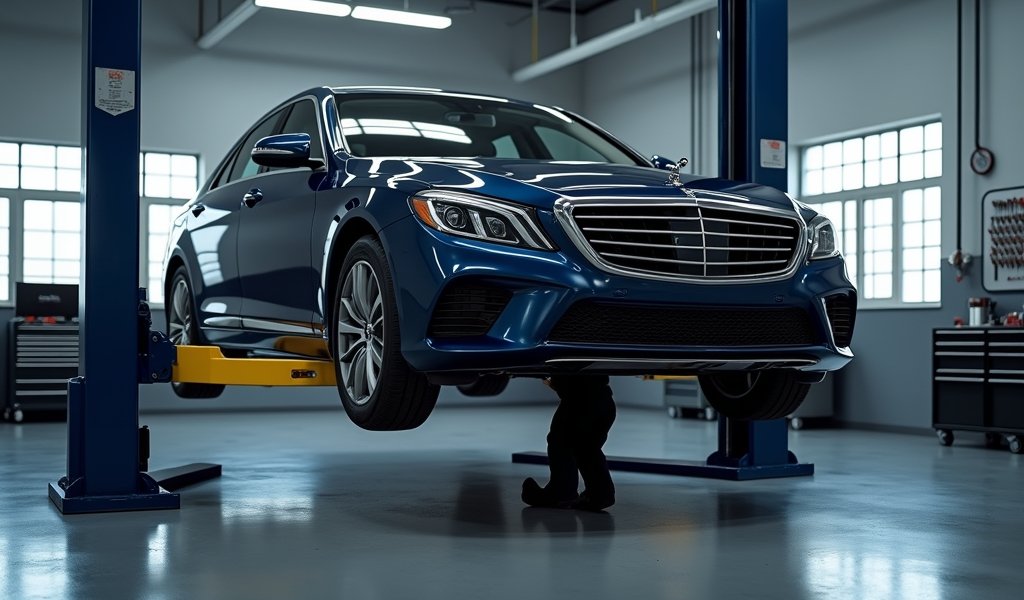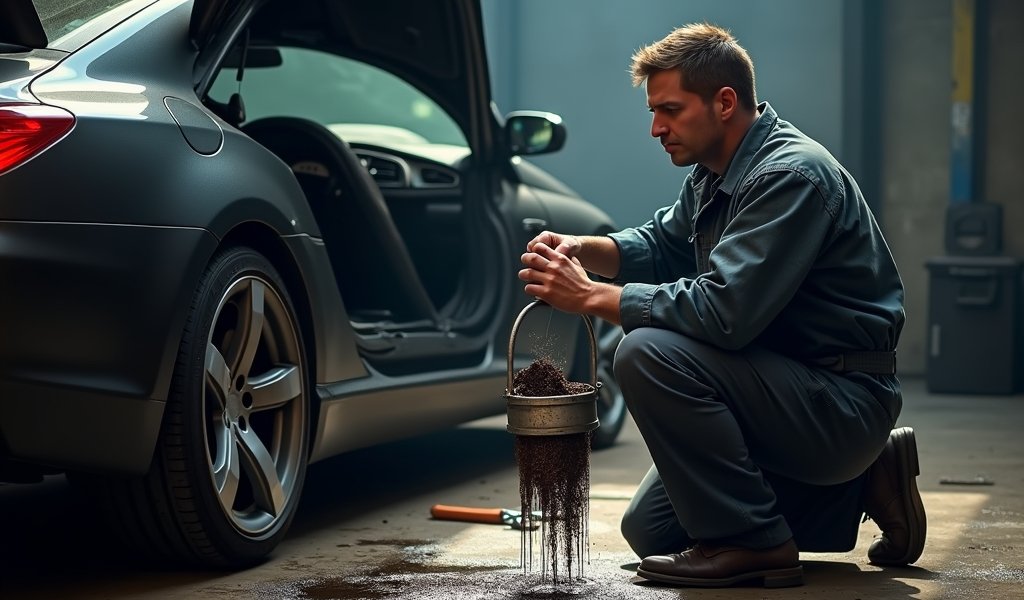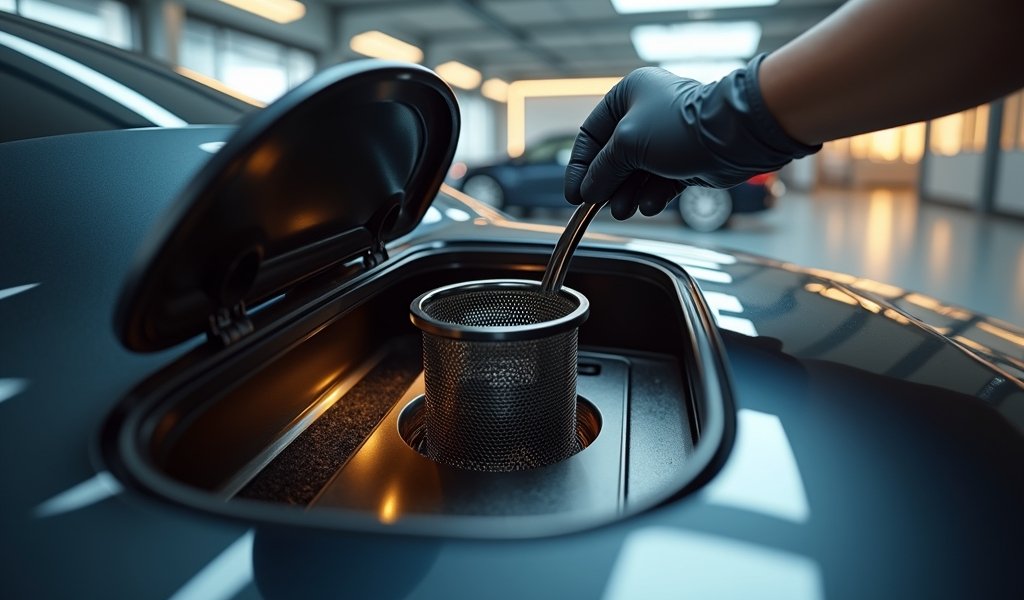Overview
This article explains how tank fuel pump strainers impact engine performance and details five solutions: professional cleaning, complete replacement, fuel tank cleaning, upgrading to high-performance strainers, and implementing regular maintenance schedules. It outlines symptoms of strainer problems, compares DIY versus professional repairs, and provides prevention tips to maintain fuel system health for long-term vehicle reliability.
Tank Fuel Pump Strainer: 5 Proven Fixes for Reliable Engine Performance
When your vehicle starts showing signs of fuel delivery issues, the tank fuel pump strainer might be the culprit you haven’t considered. As a mechanic with over 15 years of experience, I’ve seen countless drivers struggle with this small but critical component. At Knows Your Car, we understand how frustrating it can be when your vehicle loses power unexpectedly or refuses to start altogether. The good news? Most fuel pump strainer issues are fixable without breaking the bank.
Whether you’re experiencing hesitation during acceleration, strange engine noises, or complete failure to start, a clogged or damaged fuel pump strainer could be at the heart of your troubles. Let’s dive into understanding this often-overlooked component and the five proven fixes that can get you back on the road.
Table of Contents
- Understanding Fuel Pump Strainers: What They Do and Why They Matter
- Common Symptoms of a Failing Fuel Pump Strainer
- Proven Fix #1: Professional Cleaning of the Fuel Pump Strainer
- Proven Fix #2: Complete Replacement of the Fuel Pump Strainer
- Proven Fix #3: Fuel Tank Cleaning to Prevent Recurring Issues
- Proven Fix #4: Upgrading to a High-Performance Strainer
- Proven Fix #5: Implementing Regular Maintenance Schedule
- DIY vs. Professional Repair: Making the Right Choice
- Prevention Tips: Keeping Your Fuel System Healthy
- Conclusion: Ensuring Long-Term Fuel System Health
- Frequently Asked Questions
Understanding Fuel Pump Strainers: What They Do and Why They Matter
Think of your tank fuel pump strainer as your fuel system’s first line of defense. This mesh-like component sits at the intake of your fuel pump inside the gas tank, filtering out debris, rust particles, and contaminants before they can enter the fuel pump and potentially damage your engine.
Over time, this strainer can become clogged with accumulated debris, restricting fuel flow and causing a cascade of performance issues. In some vehicles, accessing the fuel pump strainer requires dropping the fuel tank, making it a job many drivers overlook until serious symptoms appear.
The importance of this humble component cannot be overstated. A properly functioning strainer ensures that only clean fuel reaches your engine, protecting expensive components like fuel injectors and ensuring optimal combustion. When it fails, your entire fuel delivery system suffers.
Modern vehicles with high-pressure fuel injection systems are particularly sensitive to fuel quality issues. Even minor contamination that makes it past a damaged or clogged strainer can cause significant problems, potentially leading to costly repairs. This is why addressing strainer issues promptly is crucial for your vehicle’s health and your wallet’s well-being.
Common Symptoms of a Failing Fuel Pump Strainer
Recognizing the warning signs of a problematic fuel pump strainer can save you from being stranded on the roadside. Here are the telltale symptoms to watch for:
- Engine sputtering or hesitation, especially at high speeds
- Difficulty starting your vehicle or extended cranking time
- Unexpected loss of power during acceleration
- Fluctuating or erratic idle
- Decreased fuel efficiency without other obvious causes
- Whining noise coming from the fuel tank area
- Check engine light illumination with fuel system-related codes
These symptoms occur because a clogged strainer restricts fuel flow, creating pressure inconsistencies in your fuel system. Your engine needs a precise fuel-air mixture for optimal performance, and any disruption to fuel delivery can throw this delicate balance off.
It’s worth noting that many of these symptoms can mimic other issues, including problems with the fuel pump relay or other fuel system components. This is why proper diagnosis is essential before proceeding with repairs.
If you notice these warning signs, don’t ignore them. Early intervention can prevent more serious damage and more expensive repairs down the road. Now, let’s explore the first proven solution to fuel pump strainer problems.

Proven Fix #1: Professional Cleaning of the Fuel Pump Strainer
When caught early, a professional cleaning can often restore your fuel pump strainer to proper working condition. This is typically the most cost-effective solution when the strainer isn’t severely damaged but has accumulated significant debris.
The cleaning process involves carefully removing the fuel pump assembly from the tank, accessing the strainer, and using specialized cleaning solutions and techniques to remove built-up contaminants without damaging the delicate mesh material. A professional will also inspect the strainer for any tears or damage that might necessitate replacement rather than cleaning.
While this might sound simple, proper cleaning requires expertise. The technician must be careful not to damage the strainer or introduce contaminants back into the fuel system. According to a study by the Society of Automotive Engineers, even microscopic particles can affect modern fuel injection systems, underlining the importance of thorough, professional cleaning.
After cleaning, a good technician will also inspect the fuel tank for signs of contamination or corrosion that might have contributed to the strainer clogging in the first place. This comprehensive approach helps prevent the problem from recurring shortly after the repair.
Proven Fix #2: Complete Replacement of the Fuel Pump Strainer
When cleaning isn’t enough, replacing the fuel pump strainer becomes necessary. This is often the case with older vehicles or when the strainer has tears, holes, or severe contamination that cleaning can’t fully address.
Replacement strainers are relatively inexpensive components, typically costing between $10-50 depending on your vehicle make and model. However, the labor costs can be significant since accessing the fuel pump assembly often requires dropping the fuel tank – a labor-intensive process that requires specialized knowledge and tools.
When replacing the strainer, it’s crucial to use an OEM (Original Equipment Manufacturer) part or a high-quality aftermarket equivalent. Cheap, low-quality strainers may not filter properly or might deteriorate quickly, leading to recurring issues.
Many mechanics recommend considering a complete fuel pump replacement if your vehicle has high mileage and you’re already paying for the labor to access the tank. This preventive approach can save money in the long run, as fuel pumps often begin to fail around the same time strainers become problematic.
During replacement, a thorough inspection of the fuel system is essential. At Knows Your Car, we’ve seen many cases where underlying issues like tank contamination or electrical problems contributed to strainer failure. Addressing these root causes is crucial for a lasting repair.
Proven Fix #3: Fuel Tank Cleaning to Prevent Recurring Issues
A clean fuel tank is essential for preventing strainer problems from recurring. If your strainer became clogged due to tank contamination, simply replacing or cleaning the strainer without addressing the tank condition is like putting a new air filter in a dusty room – it won’t stay clean for long.
Professional fuel tank cleaning involves removing the tank (if necessary), draining all fuel, and using specialized equipment to flush out contaminants, rust, and sediment. For severely contaminated tanks, chemical treatments may be necessary to dissolve stubborn deposits.
This process is particularly important for older vehicles or those that have sat unused for extended periods, as rust and fuel degradation can create significant tank contamination. It’s also crucial if you’ve experienced water contamination in your fuel system, which can happen due to condensation or contaminated fuel from a gas station.
According to NHTSA guidelines, maintaining fuel system integrity is essential for vehicle safety and emissions compliance. A clean tank contributes to overall fuel system health, potentially extending the life of components like the fuel pump and injectors.
While tank cleaning adds to the initial repair cost, it can save substantial money over time by preventing premature failure of your new or cleaned strainer. Think of it as an investment in your vehicle’s long-term reliability.
Proven Fix #4: Upgrading to a High-Performance Strainer

For those seeking increased durability and filtration efficiency, upgrading to a high-performance fuel pump strainer can be an excellent solution. These aftermarket options often feature more robust materials and improved designs compared to standard OEM strainers.
High-performance strainers typically offer several advantages:
- Finer filtration capability while maintaining adequate fuel flow
- Increased surface area to handle more debris before restriction occurs
- More durable materials resistant to fuel additives and contaminants
- Better resistance to pressure fluctuations and mechanical stress
- Extended service life, reducing the frequency of tank drops and replacements
This upgrade is particularly beneficial for vehicles used in dusty environments, those that frequently use fuel from questionable sources, or performance vehicles that demand consistent, high-volume fuel delivery.
While these upgrades cost more than standard replacements, the extended lifespan and improved protection they provide for your fuel system components often justify the investment. Many performance enthusiasts consider this upgrade essential when building reliable high-output engines that place increased demands on the fuel delivery system.
When selecting a high-performance strainer, research is crucial. Look for products with positive reviews from reputable manufacturers with established track records in the automotive filtration industry. The cheapest “performance” option is rarely the best choice for long-term reliability.
Proven Fix #5: Implementing Regular Maintenance Schedule
Prevention is always better than cure, and implementing a regular maintenance schedule for your fuel system can help catch strainer issues before they cause major problems. A proactive approach to fuel system maintenance can extend the life of your strainer and related components significantly.
A comprehensive maintenance program should include:
- Regular fuel filter replacement according to manufacturer recommendations
- Periodic use of quality fuel system cleaners to reduce deposit buildup
- Maintaining at least a quarter tank of fuel to keep the pump and strainer submerged
- Avoiding fuel from questionable sources that might contain contaminants
- Addressing check engine lights promptly, especially those related to fuel system performance
- Scheduling professional fuel system inspections at recommended intervals
For most vehicles, experts recommend inspecting the fuel pump strainer every 30,000 miles, though this can vary based on driving conditions and fuel quality. Vehicles regularly driven in dusty environments or those that frequently use low-quality fuel may require more frequent attention.
The minimal cost of preventive maintenance is insignificant compared to the expense and inconvenience of a failed fuel pump or clogged strainer leaving you stranded. Plus, a well-maintained fuel system typically delivers better fuel economy and performance, providing immediate benefits beyond just reliability.
DIY vs. Professional Repair: Making the Right Choice
When facing fuel pump strainer issues, many car enthusiasts wonder whether to tackle the job themselves or seek professional help. This decision depends on several factors, including your mechanical skills, available tools, and specific vehicle design.
For DIY-inclined individuals, here’s what to consider before attempting a strainer repair:
- Vehicle access requirements – some vehicles allow pump access through a service panel under the rear seat or cargo area, while others require dropping the entire fuel tank
- Safety considerations – working with fuel systems involves flammable materials and requires proper ventilation and safety precautions
- Specialized tools – proper fuel line disconnect tools and tank support equipment may be necessary
- Diagnostic capabilities – ensuring the strainer is actually the problem before starting repairs
- Time availability – even for experienced DIYers, this job typically takes 3-6 hours
If you’re comfortable with these factors, DIY repair can save significant labor costs. However, for most drivers, professional repair offers several advantages. A qualified mechanic brings experience in diagnosing the exact issue, has the necessary specialty tools, and can identify related problems that might not be obvious to the average car owner.
Professional repairs also typically come with warranties on parts and labor, providing peace of mind that the fix will last. When choosing between DIY and professional service, honestly assess your comfort level – fuel system repairs done incorrectly can create safety hazards and potentially costly damage.
Prevention Tips: Keeping Your Fuel System Healthy
Preventing fuel pump strainer issues is always preferable to fixing them. By implementing these simple practices, you can significantly extend the life of your fuel system components:
- Never let your fuel level drop below a quarter tank – this helps keep the pump cooled and prevents it from picking up sediment from the tank bottom
- Use top-tier fuel whenever possible – it contains better detergents and fewer contaminants
- Add a quality fuel system cleaner to your tank every 3-6 months to help dissolve deposits before they reach your strainer
- Be cautious about where you purchase fuel – some stations may have contaminated supply or poor tank maintenance
- Replace your main fuel filter according to manufacturer recommendations – it protects components downstream from the pump
- Address any check engine lights promptly, as minor issues can progress to major problems if ignored
- Consider a fuel tank additive that prevents water condensation if your vehicle sits unused for extended periods
Being vigilant about fuel quality is particularly important. According to American Petroleum Institute research, fuel contaminants are a leading cause of premature fuel system component failure. The few extra cents per gallon for quality fuel can save hundreds in repair costs.
Remember that modern fuel injection systems operate with extremely tight tolerances and high pressures. Even minor contamination can cause performance issues, making prevention especially crucial in newer vehicles with sophisticated engine management systems.
Conclusion: Ensuring Long-Term Fuel System Health
Your vehicle’s tank fuel pump strainer plays a critical yet often overlooked role in maintaining reliable performance. By recognizing the warning signs of strainer issues and implementing the five proven fixes we’ve discussed, you can avoid the frustration and expense of fuel system failures.
Whether you opt for professional cleaning, complete replacement, tank maintenance, performance upgrades, or preventive maintenance schedules, addressing strainer problems promptly will protect your vehicle’s overall fuel system health and extend its service life.
At Knows Your Car, we believe in empowering drivers with knowledge that helps them make informed decisions about their vehicles. The fuel system might be complex, but with the right approach, maintaining it doesn’t have to be complicated or excessively expensive.
Remember that proper diagnosis is the foundation of effective repairs. If you’re experiencing symptoms that might indicate a fuel pump strainer issue, don’t guess – get a proper inspection to confirm the source of the problem before proceeding with repairs.
With the information in this guide and a proactive approach to maintenance, you can enjoy reliable performance from your vehicle’s fuel system for many miles to come. Happy driving!
Frequently Asked Questions
How often should a fuel pump strainer be replaced?
Most manufacturers recommend inspecting the fuel pump strainer every 30,000-50,000 miles. Replacement is typically only necessary when it becomes clogged or damaged rather than on a fixed schedule.
Can I drive with a clogged fuel pump strainer?
Driving with a severely clogged strainer is not recommended as it can cause fuel pump failure and leave you stranded. The restricted fuel flow can also damage other components in your fuel system.
How much does it cost to replace a fuel pump strainer?
The part itself is inexpensive ($10-50), but labor costs typically range from $200-500 depending on vehicle design. This is because accessing the strainer usually requires removing the fuel tank.
What causes a fuel pump strainer to clog prematurely?
Common causes include poor fuel quality, rust or debris in the fuel tank, running the vehicle with very low fuel levels, and age-related deterioration. Regularly using fuel from questionable sources can accelerate clogging.
Can I clean a fuel pump strainer instead of replacing it?
In some cases, professional cleaning can restore a strainer to proper function if it’s not physically damaged. However, replacement is often the more reliable solution, especially for older strainers.

